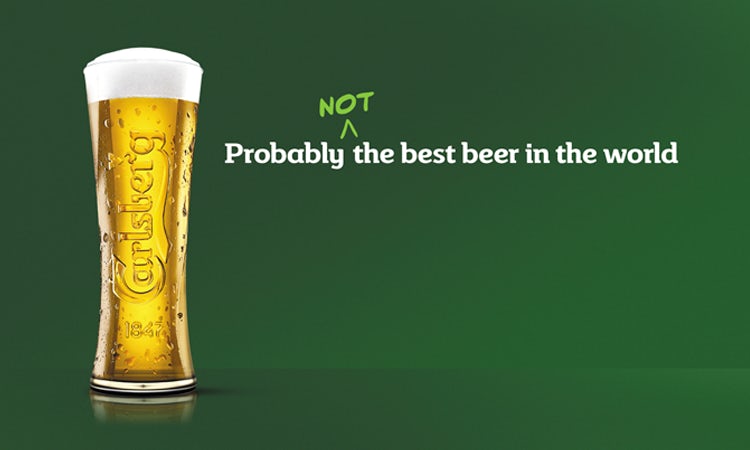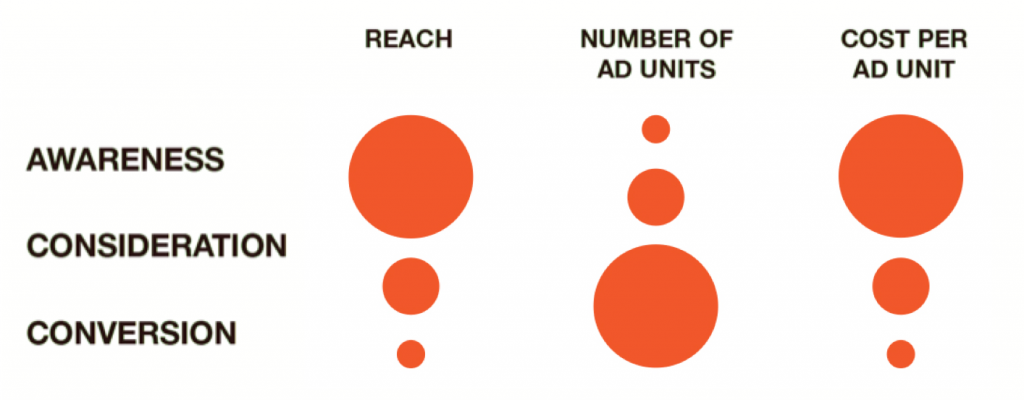The other day I had the pleasure of listening to Jenni Romaniuk speaking at our offices.

Jenni spoke about the findings in her recent book “Building Distinctive Brand Assets”. Below I will try to summarize some of my key takeaways for this. It is really potent stuff for people working with advertising and branding. As per usual, I have gravely oversimplified everything and concentrated it all to four key points:
Understand how the human brand builds associations
The human mind is complicated, illogical and lazy. It is bombarded by messages every day, and tries to take shortcuts to structure, simplify and make sense of the world.

In this, it links associations together in clusters. Take, for instance, the Apple brand. If you think of Apple, a number of associations spring to mind. The logo, the iPhone and perhaps the MacBook, Steve Jobs. The white headphones perhaps? But also things like “the device for FaceTime with my grandmother” and “Apple as in the actual fruit”. Some of these associations are stronger, some are weaker. Some remain close to the apple brand, some lets the mind wonder on to other associations.
The same is true for categories of products or services. When thinking about booking a summer vacation, a set of associations spring to mind. The sun, the beach, the blue colour of the sea. The taste of Sangria. The hassle of air travel. Memories of hotels I’ve visited. Perhaps travel being expensive? Perhaps carbon emissions?
Understanding that the human mind functions in this way is an important starting point.
Understand the associative map for your brand
The general principles for associations of course also apply to brands. When people think of your brand, they perhaps link it to assets like the logo, the tagline, the package design, and advertisements for the brand. But also past experiences, friends they know who like the product, memories, competitor brands etc.
It is important to understand what assets are linked to your brand. In understanding this, it is important not to look to your own association: No one is more biased and less representative of the target group than someone working full time with the brand. Instead, you need to ask actual representative consumers.
Manage and develop your set of brand assets
When you know what assets consumers connect to your brand, you need to start actively with that set of assets. A few things to consider;
- A strong asset ranks high in both fame (all consumers know it) and uniqueness (they associate it only to your brand). (Nike Swish is high on both parameters, Nikes link to the game of soccer may be high on fame, but is low on uniqueness)
- It is positive if consumers link your brand to the things that come to mind when looking to purchase a category (e.g the sun from the travel example above).
- There is a difference between branding assets (consistent, distinctive, building a system) and messaging (adaptable, creative, grabbing attention)
- Good assets serve a purpose, ancoring the brand to something present in consumers lives, being easily used in niche media channels, creating uniqueness relative competitors)
Utilize assets for bridging across channels, markets and time
This part I think is very interesting for advertising professionals. In a lot of advertising work, the traditional way has been to start with creating the 30 second TVC. From that, one has tried editing and squeezing that video into different channels and formats.
What I think is super relevant, is the idea of using distinctive assets as a bridge between channels. As long as the asset creates linkage, you can be freer in creating communication that is truly adapted to the channel. (not only advertising channels, but also touchpoints like instore, packaging, web design, e-commerce etc etc)
This also allows for creating bridging across different markets and segments. Where culture, language, preferences may vary, you can still create a red thread by using distinctive brand assets.
Distinctive assets also allow for bridging over time. From one campaign to the next, from one season to another, from one concept to the next. Even from one CMO to the next.
This final bit, about bridging, feels so relevant. In today’s media landscape – where a brand might want to be present in TV and print, on YouTube AND as a sponsored snapchat filter – finding principles for linking those efforts without missing channel relevance is extremely useful.
One example from Sweden is Triss (scratch card lottery).
If we start with their current TVC, there are a lot of elements in there. There is a reverse timeline, a protagonist (the lady) and an antagonist (car salesman. There is dialogue, humor, a cool sports car etc etc. But almost all of these elements are of little value as brand assets. They lack fame, they are difficult to build uniqueness on and they are not conveniently transferred to other formats.
But if we look at the final 4 second, the good stuff gets revealed:
- The colour yellow
- The “scratched area”
- The logo
- The font
- The logo
- The sound of scratching
Suddenly you have a great set of assets for bridging.

In OOH, instead of using a photo from the TVC, they go for a copy-based solution: They use colour, scratched area, font, logo, and are able to get the humorous effect in in short copywriting which is adapted to the media. The same setup works for mobile, for snapchat.. Establishing the scratching sound as an asset enables a link to radio advertising.
So that is a short summary. I really recommend you buying the full book.
P.S. In a panel discussion after the seminar, I asked Jenni about channels where branding is less salient. (Some people advocate that the “correct” way of working with things like influencers and native is to tone down branding as much as possible.) She was clear in her opinion, that channels where you cannot have tour brand assets present are not relevant channels.
P.P.S. we also briefly touched on the currently discussed Carlsberg Probably [not] the best beer in the world campaign. There has been some debate as to whether tampering with the Probably the best beer in the world tagline asset. Here, Jenni argued that the distinctive asset for Carlsberg is actually just the word probably. That means that the rest of the sentence can be considered message, rather than branding. I had not previously made up my mind on the matter myself, but after hearing this thinking, I would have to agree. Very cleaver reasoning indeed.

thx to Carat and ClearChannel for making the session happen!









